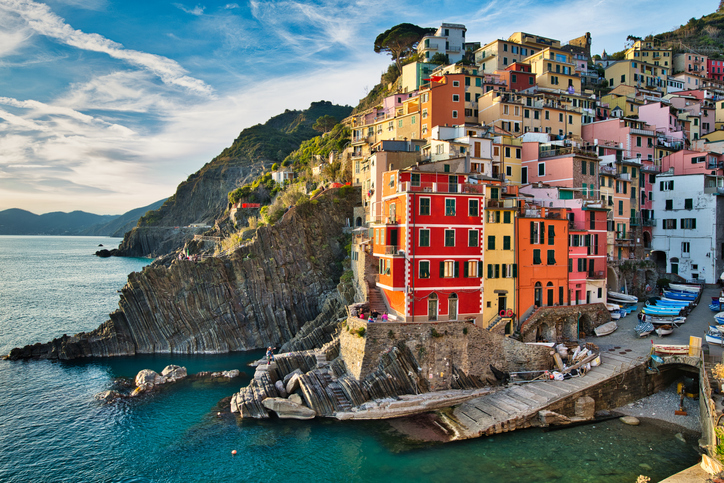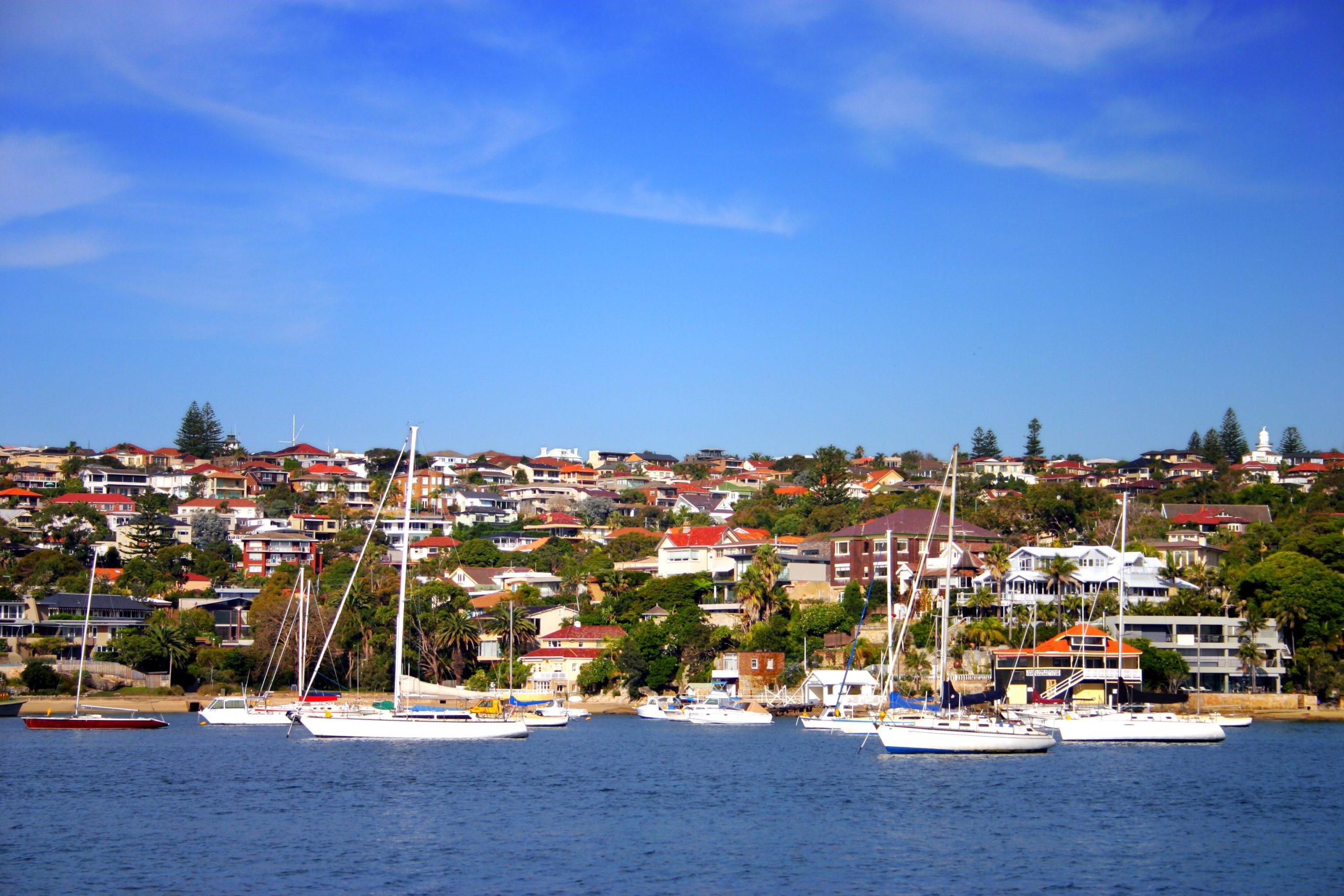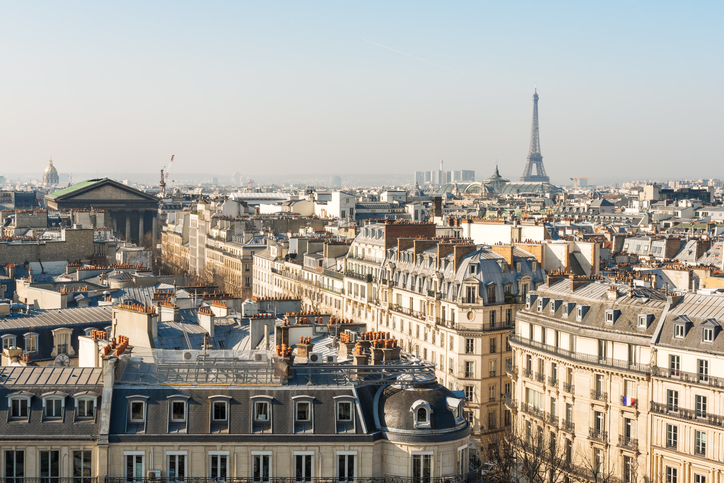What Do Americans Want in a European Vacation? Fewer Americans
As the hottest spots get overrun with U.S. tourists, some visitors plan vacations to new countries and regions
For some U.S. travellers, this summer’s hottest European destination is one without other Americans.
American tourists mobbed Europe last year, and 2023 is looking even busier, travel advisers say. Reservations for European trips rose 8% over last summer, according to data from Hopper, a travel app. Delta Air Lines President Glen Hauenstein said last week that 75% of seats on the carrier’s international flights this summer are already booked, even with added flights and seats.
Searches for round-trip flights to perennially popular cities such as Milan and London have increased over the past year, according to data from Skyscanner, a travel-search site. Also rising are searches for relatively obscure destinations such as Split, Croatia (up 73%), and Tirana, Albania (up 57%). The biggest gainer over the past year? Oslo, Norway, with a 307% increase in Skyscanner searches.
Airfares remain expensive, with the most recent consumer-price index for airline tickets up nearly 18% compared with a year earlier. Finding a hotel room in major destinations such as Barcelona or Rome—let alone an affordable one—takes serious work, travel advisers say.
Some travellers are instead looking to less-well-visited regions such as the Balkans and other corners of Eastern Europe. That is partly because of cost and partly because these tourists have already been to Paris and London, travel pros say.
Melissa Biggs Bradley, founder and CEO of New York-based travel company Indagare, says people who visited Europe last summer are leading the push toward these new destinations.
These travellers sought out tried-and-true destinations last year, she says, when they were resuming international travel as pandemic restrictions eased. After being isolated for so long, they weren’t scared off by the size of the crowds. The composition of the crowds was another matter.
“In a lot of the great resorts in Europe, people were just surrounded by other Americans,” Mrs. Bradley says.
Travellers also encountered large-scale problems with luggage at big airports and issues with service at understaffed hotels in major cities.
Erin Thibeau, a 31-year-old marketing manager who lives in Brooklyn, N.Y., chose to visit Lisbon for her first European trip last year, since it was familiar.
“I knew I would have a really lovely time, and I could navigate around pretty easily,” she says.
Ms. Thibeau says she is seeking out places where she is “not one of countless Americans.” So she chose the country of Georgia for her next Euro trip, hoping it would offer more interaction with locals. Ms. Thibeau plans to use the capital, Tbilisi, as a base to tour the country, visiting wineries and monasteries.
Travel professionals say many clients are seeking places that closely resemble popular destinations. Albania has grown popular as a spot for Adriatic Sea vacations similar to what one might experience in nearby Croatia, says Laura Lindsay, travel trends and destinations specialist at Skyscanner.
Other substitute destinations: Slovenia for those considering vacations to Italy, and northern mainland Greece or Turkey as a swap for the Greek Isles.
It doesn’t take long for an under-the-radar destination to become a hot spot. Mrs. Bradley sent many people to Sicily last year because it had availability when the Amalfi Coast and Venice didn’t. The popularity of the HBO series “The White Lotus” has made Sicily an in-demand location this summer.
Now, she says she recommends Mediterranean islands such as Corsica and Sardinia, or regions of mainland Italy, such as Puglia.
Venturing to less-traveled parts of Europe comes with trade-offs. Major tourism hubs such as Paris or Rome have more lodging options and expansive transit networks, as well as plenty of English speakers at hotels, restaurants and shops.
For tourists, “the key there is how comfortable they are in a destination where English is going to be a bit more of a challenge for some of the locals,” says Mike Salvadore, owner and co-president of 58 Stars Travel, a luxury travel agency based in Seattle.
Going to a place such as Romania or Malta might not save much money, because direct flights can be rare, and connections take time.
Food and activities often will cost less in these regions, but hotels might not be much of a bargain. Average daily rates for hotels have risen by more than a third compared with last year in Turkey, North Macedonia and Bulgaria, among others, according to preliminary March data from hospitality analytics company STR. Apart from high demand, inflation has driven those prices higher across much of Europe.
Teressa Steinbach, a 44-year-old mother of two from Louisville, Ky., is set to venture with her family to Europe in June for her daughters’ first visit to the continent.
The family had originally planned to visit friends in Italy, an itinerary that would have cost them around $20,000, but the trip didn’t pan out, Mrs. Steinbach says.
Instead, they are taking a 10-day trip to Split, with jaunts planned to other parts of Croatia and neighbouring Bosnia and Herzegovina. Mrs. Steinbach has tapped Facebook groups dedicated to Croatian travel for advice. Locals and past visitors have suggested a boat ride to the island of Brač, with its white-pebble beaches, and rafting down the Cetina river.
The Croatian vacation is hardly a bargain. Round-trip flights in premium-economy class will cost the family of four around $11,000, while their hotel will add around $6,000, she says.
It has proved a tougher sell for her daughters, ages 7 and 11, whose classmates traveled to France over spring break, Mrs. Steinbach says.
“My oldest said, ‘I’m going to lie and say that we went to Italy,’ ” she says. “She was like, ‘Who goes to Croatia?’ ”
 Copyright 2020, Dow Jones & Company, Inc. All Rights Reserved Worldwide. LEARN MORE
Copyright 2020, Dow Jones & Company, Inc. All Rights Reserved Worldwide. LEARN MORE
This stylish family home combines a classic palette and finishes with a flexible floorplan
Just 55 minutes from Sydney, make this your creative getaway located in the majestic Hawkesbury region.
As Paris makes its final preparations for the Olympic games, its residents are busy with their own—packing their suitcases, confirming their reservations, and getting out of town.
Worried about the hordes of crowds and overall chaos the Olympics could bring, Parisians are fleeing the city in droves and inundating resort cities around the country. Hotels and holiday rentals in some of France’s most popular vacation destinations—from the French Riviera in the south to the beaches of Normandy in the north—say they are expecting massive crowds this year in advance of the Olympics. The games will run from July 26-Aug. 1.
“It’s already a major holiday season for us, and beyond that, we have the Olympics,” says Stéphane Personeni, general manager of the Lily of the Valley hotel in Saint Tropez. “People began booking early this year.”
Personeni’s hotel typically has no issues filling its rooms each summer—by May of each year, the luxury hotel typically finds itself completely booked out for the months of July and August. But this year, the 53-room hotel began filling up for summer reservations in February.
“We told our regular guests that everything—hotels, apartments, villas—are going to be hard to find this summer,” Personeni says. His neighbours around Saint Tropez say they’re similarly booked up.
As of March, the online marketplace Gens de Confiance (“Trusted People”), saw a 50% increase in reservations from Parisians seeking vacation rentals outside the capital during the Olympics.
Already, August is a popular vacation time for the French. With a minimum of five weeks of vacation mandated by law, many decide to take the entire month off, renting out villas in beachside destinations for longer periods.
But beyond the typical August travel, the Olympics are having a real impact, says Bertille Marchal, a spokesperson for Gens de Confiance.
“We’ve seen nearly three times more reservations for the dates of the Olympics than the following two weeks,” Marchal says. “The increase is definitely linked to the Olympic Games.”

Getty Images
According to the site, the most sought-out vacation destinations are Morbihan and Loire-Atlantique, a seaside region in the northwest; le Var, a coastal area within the southeast of France along the Côte d’Azur; and the island of Corsica in the Mediterranean.
Meanwhile, the Olympics haven’t necessarily been a boon to foreign tourism in the country. Many tourists who might have otherwise come to France are avoiding it this year in favour of other European capitals. In Paris, demand for stays at high-end hotels has collapsed, with bookings down 50% in July compared to last year, according to UMIH Prestige, which represents hotels charging at least €800 ($865) a night for rooms.
Earlier this year, high-end restaurants and concierges said the Olympics might even be an opportunity to score a hard-get-seat at the city’s fine dining.
In the Occitanie region in southwest France, the overall number of reservations this summer hasn’t changed much from last year, says Vincent Gare, president of the regional tourism committee there.
“But looking further at the numbers, we do see an increase in the clientele coming from the Paris region,” Gare told Le Figaro, noting that the increase in reservations has fallen directly on the dates of the Olympic games.
Michel Barré, a retiree living in Paris’s Le Marais neighbourhood, is one of those opting for the beach rather than the opening ceremony. In January, he booked a stay in Normandy for two weeks.
“Even though it’s a major European capital, Paris is still a small city—it’s a massive effort to host all of these events,” Barré says. “The Olympics are going to be a mess.”
More than anything, he just wants some calm after an event-filled summer in Paris, which just before the Olympics experienced the drama of a snap election called by Macron.
“It’s been a hectic summer here,” he says.

AFP via Getty Images
Parisians—Barré included—feel that the city, by over-catering to its tourists, is driving out many residents.
Parts of the Seine—usually one of the most popular summertime hangout spots —have been closed off for weeks as the city installs bleachers and Olympics signage. In certain neighbourhoods, residents will need to scan a QR code with police to access their own apartments. And from the Olympics to Sept. 8, Paris is nearly doubling the price of transit tickets from €2.15 to €4 per ride.
The city’s clear willingness to capitalise on its tourists has motivated some residents to do the same. In March, the number of active Airbnb listings in Paris reached an all-time high as hosts rushed to list their apartments. Listings grew 40% from the same time last year, according to the company.
With their regular clients taking off, Parisian restaurants and merchants are complaining that business is down.
“Are there any Parisians left in Paris?” Alaine Fontaine, president of the restaurant industry association, told the radio station Franceinfo on Sunday. “For the last three weeks, there haven’t been any here.”
Still, for all the talk of those leaving, there are plenty who have decided to stick around.
Jay Swanson, an American expat and YouTuber, can’t imagine leaving during the Olympics—he secured his tickets to see ping pong and volleyball last year. He’s also less concerned about the crowds and road closures than others, having just put together a series of videos explaining how to navigate Paris during the games.
“It’s been 100 years since the Games came to Paris; when else will we get a chance to host the world like this?” Swanson says. “So many Parisians are leaving and tourism is down, so not only will it be quiet but the only people left will be here for a party.”
This stylish family home combines a classic palette and finishes with a flexible floorplan
Just 55 minutes from Sydney, make this your creative getaway located in the majestic Hawkesbury region.






















